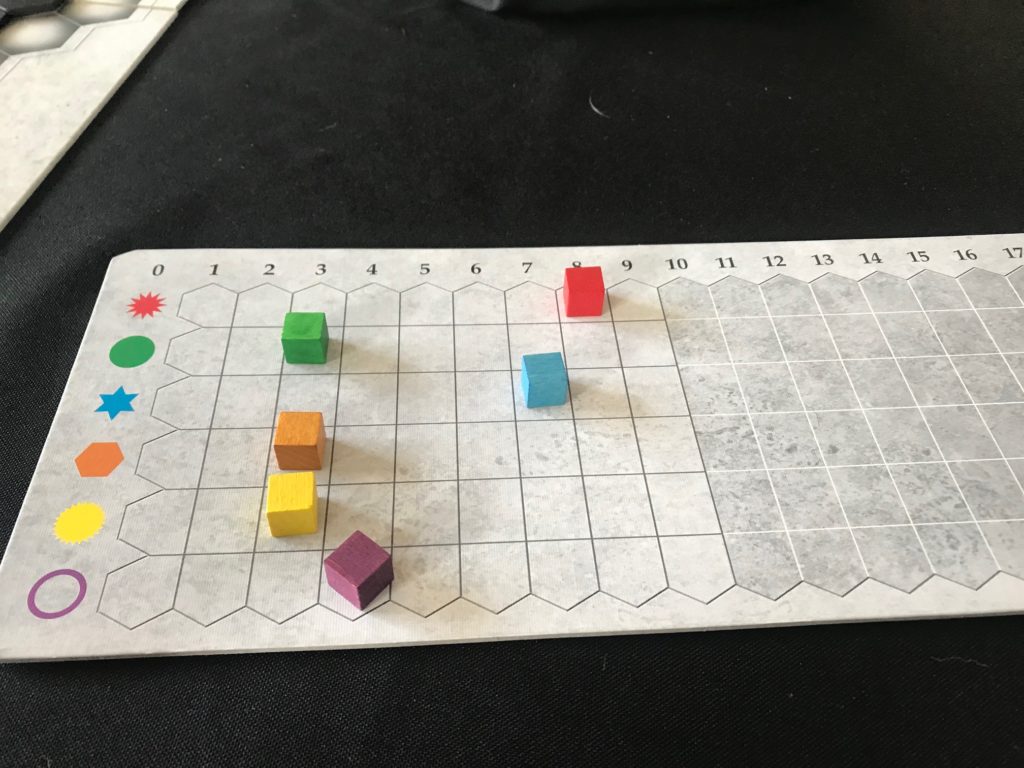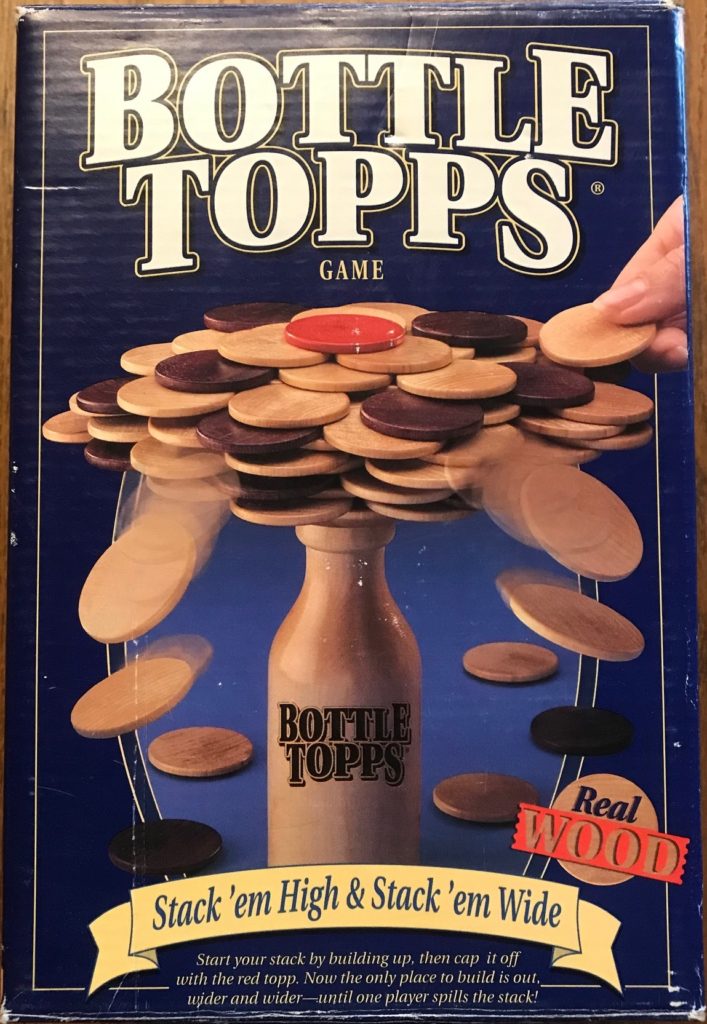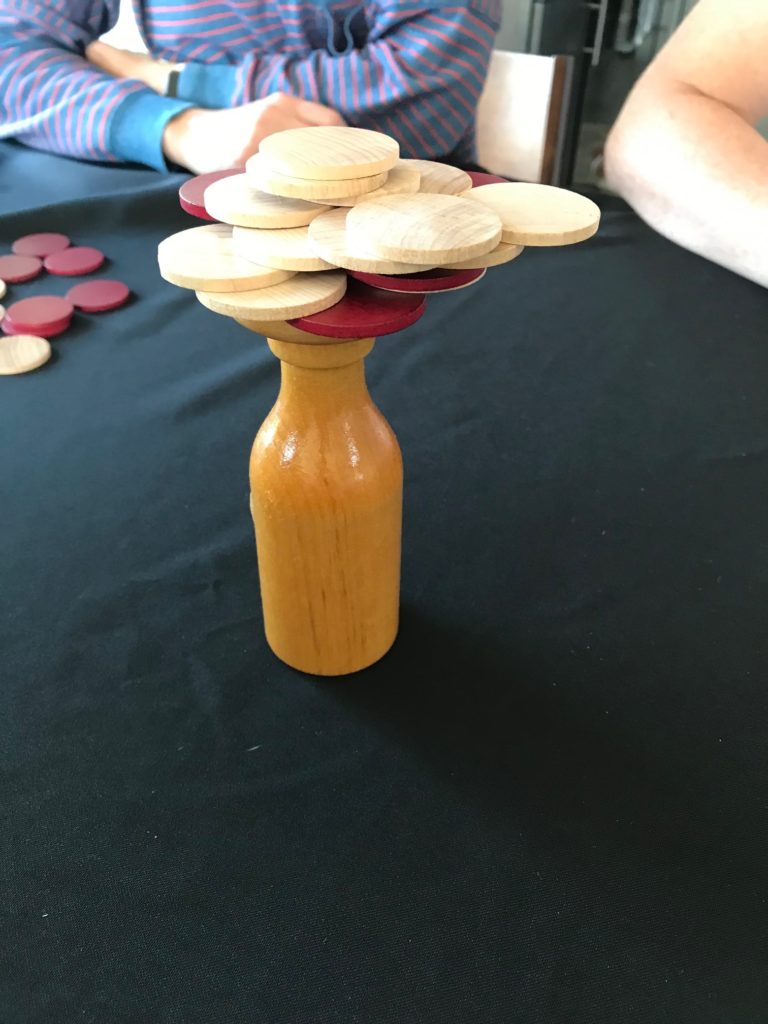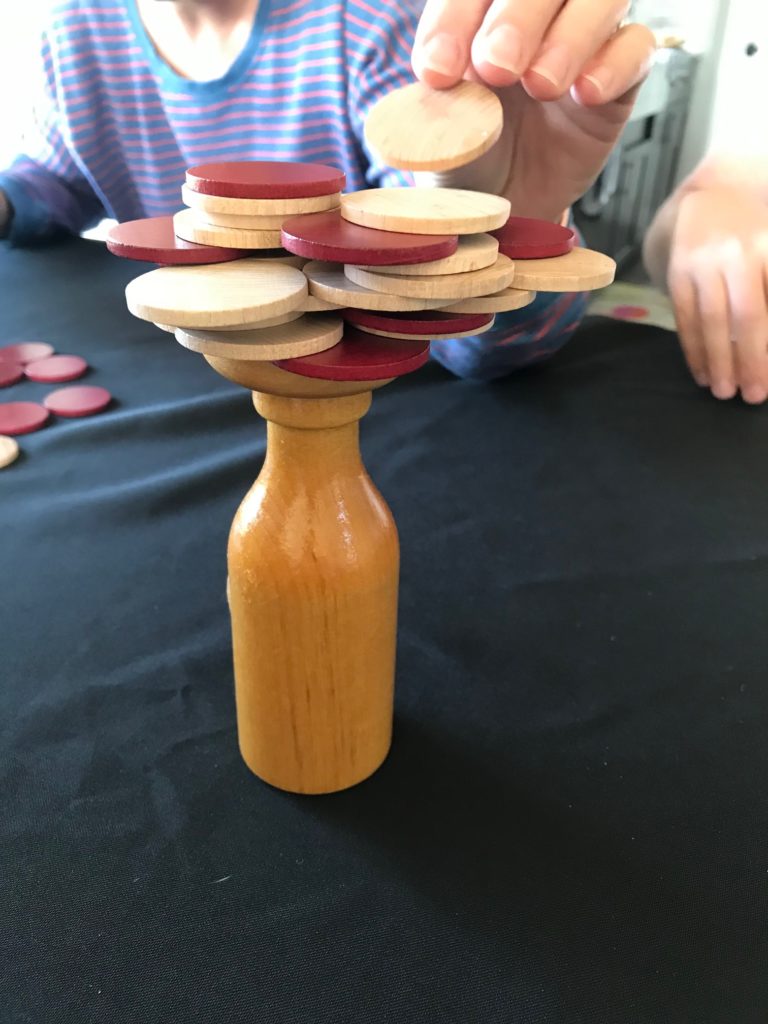Review: Spitting Image
Publisher: Parker Brothers
Year: 1984
Players: 2 to 6
Tagline: THE GAME OF SCANDAL

how we met
Since my sister moved to the area, I frequent Madison quite a bit, and Noble Knight Games has a clearance cave that I rarely leave without four or five games in tow. My very first visit I found Spitting Image, a game I’d never heard of. From a show I’d never heard of. With puppets that were once in a Genesis video that I’m not sure I’d ever seen. But the box is pretty irresistible, and I was happy to take Spitting Image home with me.
how it plays
In Spitting Image each player is a World Leader and has three scandals they are trying to keep secret. Your goal is to reveal the scandals of your fellow World Leaders and be the last World Leader with at least one scandal unrevealed. Then you win!

In true shock value fashion, the fattest player goes first. Hello, 1984.
Movement in Spitting Image is very interesting. You choose where to move, anywhere between one and six spaces. In addition to moving their own pawn, each player also moves the Journalist pawn that number of spaces. World Leaders can’t share spaces with each other, but if the Journalist Lands on the same space as a World Leader, one of that World Leader’s scandals is auctioned off. The highest bidder obtains the scandal – but can’t reveal it yet!


The player who wins the auction takes the next turn.
When a World Leader pawn lands on a Press Conference space and they have another player’s hidden scandal, they can try to expose the scandal. When the Press Conference is landed on, the following may occur:
- Blackmail (optional) where you can ask the World Leader whose scandal you have to pay you to keep it a secret. If it’s paid, you keep the scandal but the Press Conference ends and play goes to the next player.
- Accuse the World Leader by reading the headline out loud! Oh no!
- Play relevant Dirty Tricks cards to accuse the accuser of lying, but if they have the lie detector card then your accusation will fail and your secret will be out.
If a scandal is exposed, the World Leader that exposed it receives $50 million from the bank. Because the rich get richer.
If the scandal is instead refuted, the World Leader that was accused receives $10 million from the accuser as damages. That’ll show the bastard.

The player who wins the press conference always takes the next turn. The rules about play turn are important so you don’t get stuck moving in concert with the Journalist. That would suck.
Other spaces on the board move the Journalist pawn, allow World Leaders to draw cards or grant the World Leaders more money.

Play continues until one World Leader remains, and they are the winner!
NOTE: For a shorter game the rules recommend everyone counts up what they have left after the first player is out, cards are assigned dollar amounts and the World Leader with the most wealth wins!
how it went
I played Spitting Image recently with my usual gaming group. The movement took a few minutes to get used to, but then we were booking it around the board and callously moving the Journalist onto each other’s World Leaders consistently.

Some of the pawns are not especially easy to tell apart, which can be a pain. I was happy to have the big red nose on our awful Journalist pawn.

In a repeat of history, Kinnock (me) and Thatcher (John) were the last two pawns standing in the end, taking shots at each other. John had so much money I didn’t think I would be able to get poor Kinnock to the end. But I wore John down and drew very lucky cards that allowed me to protect my last, precious, scandalous secret. When I revealed that Thatcher “once went on seal-culling adventure holiday” that was it. Kinnock wins!
play or pass
Pass. I enjoy the quirky pawns in the style of Spitting Image puppets, and the movement kept things interesting. But player elimination and the dated content places major limitations on the enjoyment of Spitting Image. I do love a good satire, but it doesn’t always translate to a good game.





















